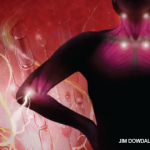Next, patients must learn to sleep on a normal schedule. “People who have problems sleeping think if they go to bed early that will help,” says Dr. Degotardi, “but you can’t force sleep.” One strategy, explains Dr. Fox, is called sleep restriction. If a patient has to get up at 6 a.m., for instance, and typically only gets four hours of sleep a night, then it’s best to tell her not to get into bed until 2 a.m. After a week or two, this time can be gradually moved up, until she’s getting drowsy at a much earlier hour and sleeping for much longer stretches of time. “And I do mean gradually!” said Dr. Fox. “You might only make it earlier in half-hour increments.”
But, do these seemingly simple CBT strategies actually work? “The answer is a resounding yes,” says Dr. Degotardi. A meta-analysis of 21 studies showed that about 75% of people improved after going through CBT. “The good news is that there are no side effects like with medications,” she adds. “And even better, it seems the improvements continue long after treatment starts.”
Finally, doctors should try to reduce their patients’ psychological worries about getting enough rest. Patients tend to worry that “tomorrow’s going to be a disaster, that it’s the end of the world, if I don’t get sleep tonight,” explains Dr. Fox. Those with other health conditions, in particular, believe that their future health is entirely dependent on how much sleep they get in one night. “That’s just a lot of pressure,” she says, and the anxiety usually makes it even more difficult to fall asleep.
“You’re not aiming for perfection—that’s the key,” says Dr. Degotardi. “No person has perfect sleep all the time. When you’re talking with patients, you’re educating them to be realistic about what their goals might be.”
Virginia Hughes is a medical writer based in New York City.



